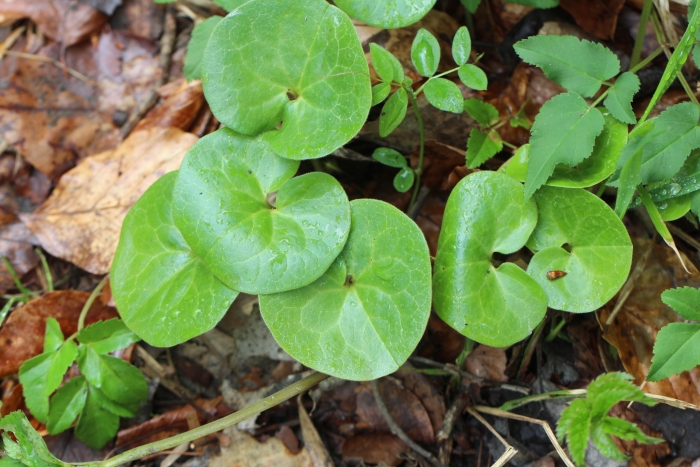European Wild Ginger
(Asarum europaeum)
European Wild Ginger (Asarum europaeum)
/
/

antrum
CC BY 4.0
Image By:
antrum
Recorded By:
Copyright:
CC BY 4.0
Copyright Notice:
Photo by: antrum | License Type: CC BY 4.0 | License URL: http://creativecommons.org/licenses/by/4.0/ | Rights Holder: antrum | Publisher: iNaturalist | Date Created: 2021-04-30T15:15:33-07:00 |















































































Estimated Native Range
Summary
Asarum europaeum, commonly known as European Wild Ginger, is an evergreen or semi-deciduous perennial herb native to the understory of deciduous and mixed forests in Europe, extending into the Caucasus and Siberia. It is not related to the culinary ginger, Zingiber officinale. European Wild Ginger typically forms a dense carpet of heart-shaped leaves, with inconspicuous brownish-purple flowers that emerge in late winter to early spring, often hidden beneath the foliage. The plant thrives in the cool, moist, and shaded conditions of its native habitat, contributing to the forest floor’s biodiversity.
European Wild Ginger is valued for its lush, ground-covering foliage, which remains attractive throughout the growing season. It is particularly useful in shaded garden areas, woodland settings, and for erosion control on slopes. The plant has been awarded the Royal Horticultural Society’s Award of Garden Merit, indicating its exceptional performance in gardens. It requires consistently moist soil with good organic content and medium drainage. While generally low-maintenance, it can suffer from slug and snail damage. It is not invasive and does not have aggressive roots, making it a safe choice for planting near structures.CC BY-SA 4.0
European Wild Ginger is valued for its lush, ground-covering foliage, which remains attractive throughout the growing season. It is particularly useful in shaded garden areas, woodland settings, and for erosion control on slopes. The plant has been awarded the Royal Horticultural Society’s Award of Garden Merit, indicating its exceptional performance in gardens. It requires consistently moist soil with good organic content and medium drainage. While generally low-maintenance, it can suffer from slug and snail damage. It is not invasive and does not have aggressive roots, making it a safe choice for planting near structures.CC BY-SA 4.0
Plant Description
- Plant Type: Herb
- Height: 0.3-0.5 feet
- Width: 1-1.5 feet
- Growth Rate: Slow
- Flower Color: N/A
- Flowering Season: Spring
- Leaf Retention: Evergreen
Growth Requirements
- Sun: Part Shade, Full Shade
- Water: Medium
- Drainage: Medium
Common Uses
Bank Stabilization, Border Plant, Butterfly Garden, Deer Resistant, Fragrant, Groundcover, Low Maintenance, Rabbit Resistant, Street Planting
Natural Habitat
Understory of deciduous and mixed forests
Other Names
Common Names: Asarabacca, Hazelwort, Wild Spikenard, Asarabacca, Hasselurt, Haselwurz, Gewöhnliche Haselwurz, Asaret D’Europe, Mansoor, Europeisk Hasselört, Hasselört
Scientific Names: , Asarum europaeum, Asarum europaeum var. romanicum, Asarum europaeum f. patens, Asarum europaeum f. pseudocapsicum, Asarum europaeum var. andreanszkyi,
GBIF Accepted Name: Asarum europaeum L.